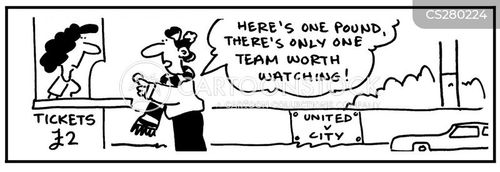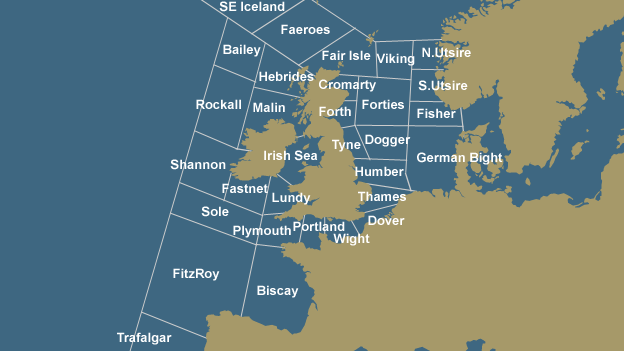In my two previous posts, I've examined the data for the English Premier League for the last ten seasons, reviewing how 'exciting' each season has been. I've drawn some conclusions, segmented the data and found some interesting data points, but not yet produced anything that's really useful, or that can help a football fan.
It's time to move on, and to provide some useful facts and figures that are more meaningful and more useful than I've written previously - in particular, to look at the relative value and cost of season tickets for each of the teams. But first, a quick recap:
Post number 1: Less than 10% of English Premier League games are goal-less (0-0) draws.
Post number 2: Arsenal consistently achieve more goals per game (scored plus conceded) than average, while Everton frequently have fewer goals per game than average.
All very interesting and fascinating and useful to quote, but not really anything you can do anything with. So far, the best recommendation I could make is: "If you were given the choice between watching an Arsenal game or an Everton game, I'd recommend the Arsenal game."
What I propose to do next is to start connecting the data I have to some additional data that will help form recommendations - in this case (and in most cases in business), money. Money, in the form of reduced costs or increased sales and revenue, is often the essential part of any business recommendation, and I can apply the same process here. We know how many goals per game (on average) we will see for each team in the English Premier League, but what we haven't yet identified is how much it would cost to see each game, and how much it will cost per goal.
In order to calculate this, I've taken the data from 2015-16 (the most recent completed season) and looked at the costs of season tickets, using the Sky Sports website for the costs. I'm using the cheapest standard adult season ticket cost in each case.
Jumping straight into the analysis - let's compare the cost of a season ticket to the average number of goals per game for the 2015-16 season:
And then compare the season tickets on a "cost per goal" basis, again for the 2015-16 season:
Isn't it interesting how the data has become more relevant, meaningful and even actionable when you start introducing money?
Arsenal may usually have the largest number of goals per season (or per game), and consistently achieve over-average performance there, but if you want to watch 'exciting' football of their type, you're going to have to pay for it. (Note that the 2015-16 season was lower than usual for Arsenal, who actually came in below average for goals per game).
If you want the best value for your season ticket, then Man City is the place to go, at just £2.67 per goal - and you'll see plenty of goals too,
This data could be displayed geographically (are London clubs better value than other regions?) or sorted in various other ways. Beware, though, while you do this, of introducing apparent trends in your data when there is none:
This one isn't too bad, although it does look like season tickets are coming down in price.
This second one, though, makes it appear that (1) there is a trend, and (2) season ticket prices are going up (which is generally the case).
In Summary
In this series, I've moved from data to analysis to insight:
Post number 1: Less than 10% of English Premier League games are goal-less (0-0) draws. Data, and analysis
Post number 2: Arsenal consistently achieve more goals per game (scored plus conceded) than average, while Everton frequently have fewer goals per game than average. Analysis, but still nothing actionable.
Post number 3 (this post): Arsenal may have the most goals on average, but in 2015-16 the cost of seeing a goal (£10.25) was much higher than the other clubs: 20% higher than the next-highest (Southampton, £8.53) and nearly four times higher than seeing a goal at Man City (£2.67, actually 3.83 times more).
Recommendations:
If you have the choice of watching an Everton match or an Arsenal match as a neutral, pick the Arsenal match.
Buy a season ticket for Many City, Villa, or West Brom. If you want to follow a London club, the best value season ticket for London was Chelsea at £4.77 per goal, still half the price of an Arsenal ticket. Actionable analysis.
Review
In a future post, I'll look at this worked example, pulling apart the differences between data, analysis, actionable analysis and insight
It's time to move on, and to provide some useful facts and figures that are more meaningful and more useful than I've written previously - in particular, to look at the relative value and cost of season tickets for each of the teams. But first, a quick recap:
Post number 1: Less than 10% of English Premier League games are goal-less (0-0) draws.
Post number 2: Arsenal consistently achieve more goals per game (scored plus conceded) than average, while Everton frequently have fewer goals per game than average.
All very interesting and fascinating and useful to quote, but not really anything you can do anything with. So far, the best recommendation I could make is: "If you were given the choice between watching an Arsenal game or an Everton game, I'd recommend the Arsenal game."
What I propose to do next is to start connecting the data I have to some additional data that will help form recommendations - in this case (and in most cases in business), money. Money, in the form of reduced costs or increased sales and revenue, is often the essential part of any business recommendation, and I can apply the same process here. We know how many goals per game (on average) we will see for each team in the English Premier League, but what we haven't yet identified is how much it would cost to see each game, and how much it will cost per goal.
In order to calculate this, I've taken the data from 2015-16 (the most recent completed season) and looked at the costs of season tickets, using the Sky Sports website for the costs. I'm using the cheapest standard adult season ticket cost in each case.
 |
| Image credit |
Jumping straight into the analysis - let's compare the cost of a season ticket to the average number of goals per game for the 2015-16 season:
And then compare the season tickets on a "cost per goal" basis, again for the 2015-16 season:
Isn't it interesting how the data has become more relevant, meaningful and even actionable when you start introducing money?
Arsenal may usually have the largest number of goals per season (or per game), and consistently achieve over-average performance there, but if you want to watch 'exciting' football of their type, you're going to have to pay for it. (Note that the 2015-16 season was lower than usual for Arsenal, who actually came in below average for goals per game).
If you want the best value for your season ticket, then Man City is the place to go, at just £2.67 per goal - and you'll see plenty of goals too,
This data could be displayed geographically (are London clubs better value than other regions?) or sorted in various other ways. Beware, though, while you do this, of introducing apparent trends in your data when there is none:
This one isn't too bad, although it does look like season tickets are coming down in price.
This second one, though, makes it appear that (1) there is a trend, and (2) season ticket prices are going up (which is generally the case).
In Summary
In this series, I've moved from data to analysis to insight:
Post number 1: Less than 10% of English Premier League games are goal-less (0-0) draws. Data, and analysis
Post number 2: Arsenal consistently achieve more goals per game (scored plus conceded) than average, while Everton frequently have fewer goals per game than average. Analysis, but still nothing actionable.
Post number 3 (this post): Arsenal may have the most goals on average, but in 2015-16 the cost of seeing a goal (£10.25) was much higher than the other clubs: 20% higher than the next-highest (Southampton, £8.53) and nearly four times higher than seeing a goal at Man City (£2.67, actually 3.83 times more).
Recommendations:
If you have the choice of watching an Everton match or an Arsenal match as a neutral, pick the Arsenal match.
Buy a season ticket for Many City, Villa, or West Brom. If you want to follow a London club, the best value season ticket for London was Chelsea at £4.77 per goal, still half the price of an Arsenal ticket. Actionable analysis.
Review
In a future post, I'll look at this worked example, pulling apart the differences between data, analysis, actionable analysis and insight












